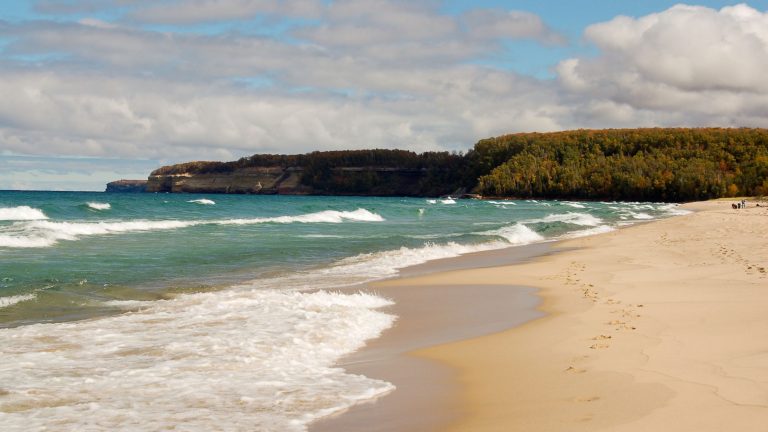Swimming in lakes can be enjoyable, but only when the lake is clean and the conditions are safe! There are several reasons to exercise caution or avoid swimming altogether in certain situations at the lake. Before getting into your swimsuit and grabbing your beach bag for the day, consider the following instances where going for a dip may be risky, if not dangerous, with explanations for why the concerns highlighted below may pose risks to your health.
Water Quality Issues
In a recent report, Lake.com ranked America’s dirtiest and cleanest lakes, with Utah Lake first on the list. At least 11 neighboring lakes in Casselberry, Florida, contain some of the highest levels of lead among all lakes in America. The cleanest lake, by comparison, is Lake Louise in Florida.
Lakes can be considered ‘dirty’ for many reasons, including:
- Bacteria and Pathogens: High levels of bacteria, such as E. coli, can indicate fecal contamination and pose a significant health risk, causing gastrointestinal illnesses, skin infections, and other health issues. You may have heard about lakes being closed due to this unfortunate scenario, and swimming is only allowed once the levels have been restored to where they should be.
- Algal Blooms: Harmful algal blooms, particularly blue-green algae (cyanobacteria), can produce toxins that are harmful to humans and animals. These can lead to skin rashes, respiratory problems, and even more severe health effects if ingested.
- Chemical Contaminants: Pollutants such as heavy metals, pesticides, and industrial chemicals can contaminate lake water, posing long-term health risks, including cancer and neurological damage.
Weather Conditions

Do you have a storm chaser in your family who reports what storms are coming your way in a family chat? If not, download a weather app with emergency alerts and keep your eyes on the skies! Sometimes, you can see a storm on the horizon or sense that the weather is taking a turn. Here are some examples of when it is ill-advised to go swimming, whether in a lake, at the ocean, or even in a pool.
- Thunderstorms and Lightning: Swimming during thunderstorms is extremely dangerous due to the risk of lightning strikes, which can be fatal. If you hear thunder, it can only be a matter of time before lightning follows suit. Don’t risk it. Get out of the water and find a safe place on dry land to find refuge.
- Strong Winds: High winds can create rough water conditions, making swimming difficult and increasing the risk of drowning.
Water Conditions

What’s the water like? Strong currents may whisk away even the most seasoned swimmer. Temperature can wreak havoc, and not being able to see where you’re swimming is hazardous as well. Consider the following:
- Undercurrents and Undertow: Even in seemingly calm waters, strong undercurrents or dangerous currents (often referred to as undertows because it feels like your feet are being pulled) can pull swimmers underwater or away from shore, leading to drowning. Some beaches along the Great Lakes are infamous for undertow, so it is best to watch the signs and only swim in areas marked as safe and being patrolled by a lifeguard. The best thing to do is to avoid the current in the first place.
- Cold Water Temperatures: Cold water can cause hypothermia, even in summer months, which can impair physical and mental abilities and increase the risk of drowning. While it’s strange to think of hypothermia in summer, it can and does happen.
- Poor Visibility: Murky or dark water can hide hazards like submerged rocks, vegetation, or sudden drop-offs, increasing the risk of injury. Depending on where you are, these hazards may be marked by a buoy or some other indicator. Don’t risk swimming when you don’t know what you’re swimming in or swimming towards.
Physical Hazards

If the elements and water quality aren’t enough to look out for, physical hazards may also be present in the water. This includes predators like alligators (yes, alligators can be in lakes!). Take a look at the following hazards.
- Sharp Objects and Debris: Is your tetanus shot up to date? Broken glass, sharp rocks, or discarded metal objects can cause cuts and injuries. Think of rusty metal near a boathouse, docks, or even a stray fishing hook that got snagged but is still on a line.
- Submerged Vegetation: Thick aquatic plants can entangle swimmers, leading to panic and potentially drowning. Avoid seaweed and reedy underwater plants.
- Wildlife: Certain wildlife, such as snapping turtles or aggressive fish, can pose a threat. In some regions, freshwater lakes may also have dangerous animals like alligators. We have snapping turtles in our lakes in Muskoka, and boy, are they big! If you are near gators, they can appear to look like logs or driftwood on the surface of the water. Be vigilant and do not swim in areas known for dangerous wildlife.
Human Factors

Our human frailty plays a role in whether or not we go swimming, whether due to fatigue or otherwise. Other situations where you should stay at a safe distance from the water include:
- Lack of Lifeguards: Swimming in areas without lifeguards can be riskier, as no one is available to provide immediate assistance in case of an emergency.
- Fatigue or Impairment: Swimmers who are tired, under the influence of alcohol or drugs, or inexperienced may struggle in the water, increasing the risk of accidents.
- Overcrowding: High numbers of people can lead to accidental collisions, increasing the risk of injury. Just because the beach is a popular place to be doesn’t mean that it is a safe place to swim under those conditions.
Environmental Protection and Regulations

At times, the government may designate specific zones as off-limits for swimming. Consider how some forests are protected, like the Carolinian Forest on Western University’s campus in London, Canada. The same can be true of
- Protected Areas: Some lakes may have designated protected zones where swimming is restricted to preserve wildlife habitats or water quality.
- Local Regulations: Local authorities may issue advisories or temporary bans on swimming due to known hazards or water quality issues.
Before swimming in any lake, it’s important to check local advisories and conditions, understand the potential risks, and take appropriate precautions, such as swimming in designated areas, using life jackets, and never swimming alone.
Always look at caution signs for the state of the water, whether it cannot be swam in because of bacteria levels in the water, storm conditions or undertow. Be safe out there!







